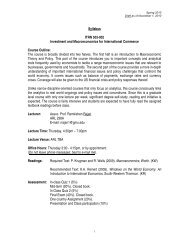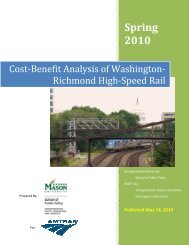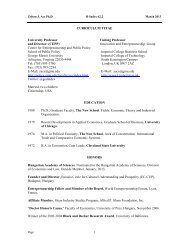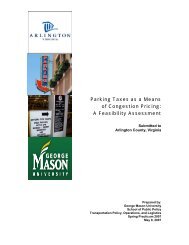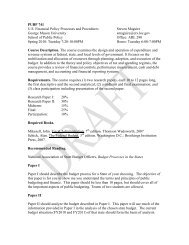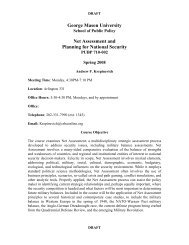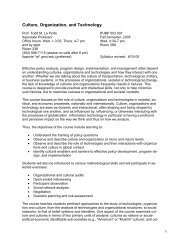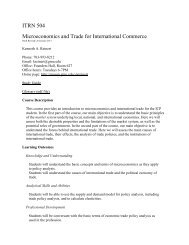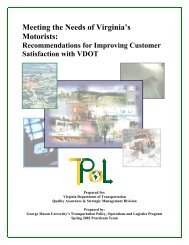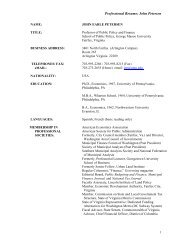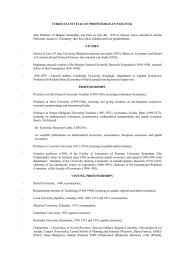Coordinating critical transportation infrastructure vulnerability
Coordinating critical transportation infrastructure vulnerability
Coordinating critical transportation infrastructure vulnerability
Create successful ePaper yourself
Turn your PDF publications into a flip-book with our unique Google optimized e-Paper software.
3.0 CATALOG OF SELF–ASSESSMENT TOOLS<br />
This section provides a catalog of <strong>vulnerability</strong> self-assessment tools that show potential for use in<br />
the National Capital Region. The term “self-assessment tool” is used generically to describe any of<br />
the models (e.g., mathematical or simulation), processes or tools that may be applicable to a regional<br />
assessment of <strong>transportation</strong> <strong>infrastructure</strong> <strong>vulnerability</strong>.<br />
The goal in identifying, cataloging and ranking these tools is to identify a set of tools that is currently<br />
available and could be used by organizations within the National Capital Region to address the<br />
requirements of the Homeland Security Act of 2002. This is not to say that a tool currently exists<br />
that will meet these needs. Rather, it is assumed that a set of tools will need to be identified that can<br />
be used in combination with each other (possibly through the creation of a hybrid tool) to begin to<br />
address Homeland Security Act of 2002 requirements and establish a process to prioritize needs<br />
throughout the region.<br />
Fifteen tools are examined for applicability to the National Capital Region. A description of each<br />
tool is provided in Appendix A. The tools are weighed against a set of criteria that is separated into<br />
four categories: Planning and Prevention, Response, Recovery and Mitigation. An analysis of how<br />
each tool compares to the criteria is provided and each tool is categorized as one of the following:<br />
Robust, Comprehensive, Adequate or Limited for the purpose of a regional assessment of <strong>critical</strong><br />
<strong>infrastructure</strong> <strong>vulnerability</strong>.<br />
3.1 LITERATURE SEARCH<br />
A literature search was conducted in order to obtain currently available <strong>vulnerability</strong> self-assessment<br />
tools. The literature searched focused primarily among the following areas:<br />
1. Federal Transit Administration<br />
2. Federal Highway Administration<br />
3. National Academies: Transit Cooperative Research Program (TCRP), Nation Cooperative<br />
Highway Research Program (NCHRP) and the Transportation Research Board (TRB)<br />
4. Homeland Security Administration<br />
5. General Search: Lexis-Nexis, Google<br />
A number of documents were identified based upon these sources. After a brief review of each<br />
document, fifteen of the tools appeared to be appropriate candidates for further review and analysis.<br />
It is important to note that there were some tools identified that were inaccessible because of<br />
security concerns. While it can be assumed that these tools would be applicable, they are not<br />
included in this analysis.<br />
The tools varied from general guidance documents to an overall framework for conducting a<br />
<strong>vulnerability</strong> assessment. In order to better analyze the tools, they were classified as one of the<br />
following:<br />
PUBP 710/722 Page 11 of 60<br />
WMATA Case Study June 5, 2003



